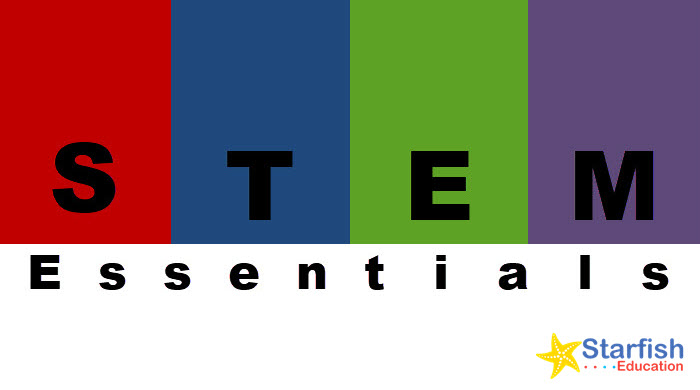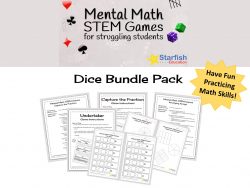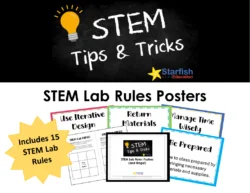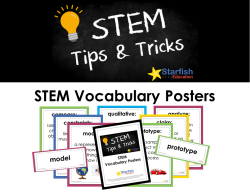
When we plan a STEM unit, there are a lot of steps that are part of a linear progression with each step building on the one before. Then, there are other elements (like STEM Role Cards) that are related and necessary, but don’t seem to fit into a linear progression.
One of those other non-linear components is how to facilitate students’ development of ideas.
When students work together, they almost always have difficulty brainstorming. It’s not enough to tell students to “just go think up good ideas”. The younger the student, the more difficulty they have working in this “white space”. As such, it helps to share brainstorming strategies to help create a sort of process for them to follow.
Here are some brainstorming strategies to try:
Brainwriting
In this method, each group member anonymously writes down several ideas related to the topic. Then, one person reads all of the ideas out loud and the group decides which ones should be considered.
Graphic Organizer
Most students are familiar with different graphic organizers and have used them before. They take many different forms and can be as simple as a blank piece of paper to something more elaborate printed on a worksheet. In any case, it’s important to allow students to each write their ideas onto the worksheet or chart paper and build on other ideas they are hearing.
Rapid Response
Students quickly generate as many ideas as they can within a specified time-frame. This strategy is similar to the Stepladder, but because there is a time limit, quick thinking and creativity are valued and no emphasis is put on
SCAMPER
Once students have come up with one idea (and might have gotten stuck), using the SCAMPER strategy will help generate others. With each letter standing for a way to generate ideas, students can work to find other solutions. (Substitute, Combine, Adapt, Modify, Put to another use, Eliminate, Rearrange)
Stepladder
Students generate ideas individually, then partner up within their team to discuss and add more ideas. Finally, all members of the group work together to share their ideas and generate more.
Why Analysis
This strategy involves asking “Why?” questions about the topic to gain a better understanding of the problem to be solved and better define potential solutions.
There is no right way to brainstorm, but having a few strategies to pick from help kids take control of their learning and generate ideas. These strategies offer diverse approaches to brainstorming in STEM fields, promoting creativity, critical thinking, collaboration, and effective problem-solving.
Get the STEM Essentials Bundle Pack to help plan your STEM Units!
Subscribe to Stay Connected!
-
Easy Data Collection for STEM- Bundle Pack
$16.95 -
Mental Math STEM Games- Dice Bundle
$16.95 -
STEM Essentials- Bundle Pack
$16.95 -
Brown Bag STEM Challenge I – Bundle Pack
$23.95









